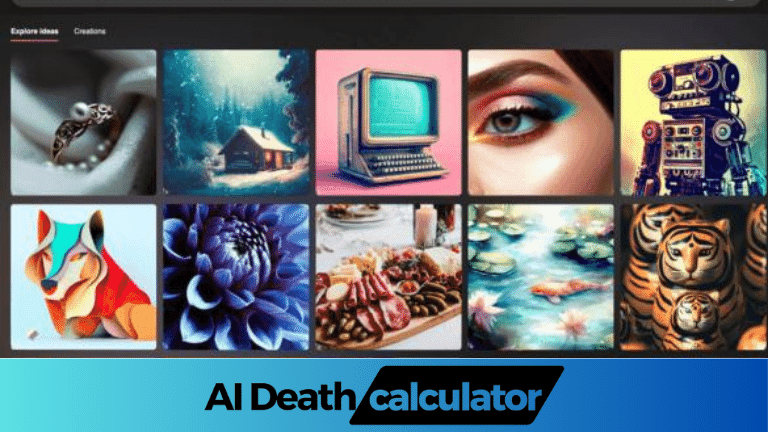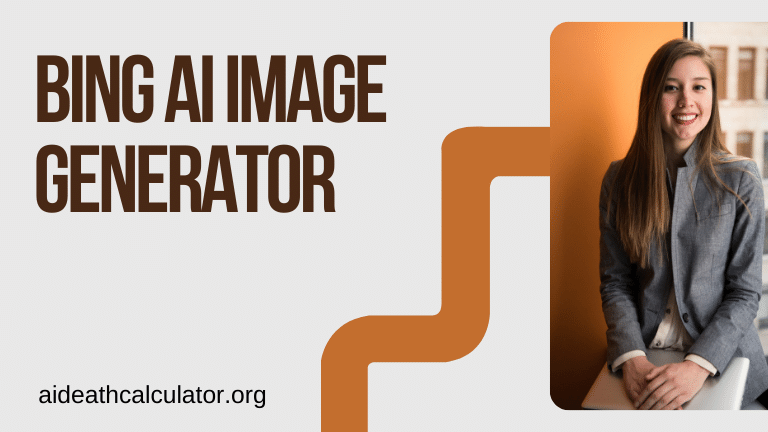Bing AI Image Generator. Microsoft has once again demonstrated its commitment to innovation with the introduction of the Bing AI Image Generator. This cutting-edge tool, powered by advanced machine learning algorithms, has the potential to revolutionize the way we approach visual content creation. By harnessing the power of AI, the Bing AI Image Generator empowers users to generate stunning, high-quality images from mere textual descriptions, opening up a world of endless possibilities for artists, designers, marketers, and creative enthusiasts alike.
As the demand for visually captivating content continues to soar across various industries, the Bing AI Image Generator emerges as a game-changer, offering a unique blend of creativity, efficiency, and accessibility. In this comprehensive guide, we will delve into the intricacies of this remarkable tool, exploring its features, capabilities, and the factors that set it apart in the rapidly growing AI image generation market.
Understanding the Bing AI Image Generator
At its core, the Bing AI Image Generator leverages the power of deep learning techniques, such as generative adversarial networks (GANs) and diffusion models, to create visually stunning images based on textual prompts or input. This innovative tool has been trained on vast datasets comprising millions of images, enabling it to recognize patterns, understand visual concepts, and generate entirely new visuals that seamlessly blend elements from its training data.
Unlike traditional image creation methods that rely on manual manipulation or photo editing, the Bing AI Image Generator operates on a fundamentally different principle. By processing natural language prompts, it can interpret and translate textual descriptions into visually compelling images, capturing intricate details, textures, and compositions with remarkable accuracy.
The true power of the Bing AI Image Generator lies in its ability to transcend the boundaries of human imagination. Users can input even the most abstract or surreal concepts, and the tool will endeavor to bring those ideas to life in a visually coherent and aesthetically pleasing manner. This capability opens up a world of possibilities for creative expression, ideation, and concept exploration across various domains, from art and design to product visualization and storytelling.
Key Features and Capabilities
The Bing AI Image Generator is a feature-rich tool that offers a range of powerful capabilities, catering to the diverse needs of its users. Here are some of the key features and capabilities that make this tool a standout in the AI image generation space:
- Natural Language Processing (NLP): At the heart of the Bing AI Image Generator lies a sophisticated natural language processing (NLP) system that allows users to input textual prompts in a conversational and intuitive manner. This NLP engine can interpret complex descriptions, understand context, and translate them into visually compelling images, enabling seamless creative expression.
- High-Resolution Image Generation: The Bing AI Image Generator is capable of producing high-resolution images with exceptional detail and clarity. Users can generate visuals with resolutions up to 4K or higher, making the tool suitable for a wide range of applications, from digital artwork and concept designs to marketing materials and product visualization.
- Style and Aesthetic Control: While the tool excels at generating images based on textual prompts, it also offers users granular control over the aesthetic and stylistic aspects of the generated visuals. Users can specify desired art styles, color palettes, lighting conditions, and even incorporate specific visual elements or references, allowing for a highly personalized and tailored creative experience.
- Multi-Modal Input: In addition to textual prompts, the Bing AI Image Generator supports multi-modal input, enabling users to combine text with existing images or sketches. This feature opens up new possibilities for image editing, enhancement, and creative ideation, as users can leverage the tool’s capabilities to expand upon or reimagine existing visuals.
- Iterative Refinement: The Bing AI Image Generator is designed to facilitate an iterative and collaborative creative process. Users can provide feedback on generated images, refine their prompts, and guide the tool towards their desired outcome, fostering a dynamic and interactive experience that nurtures creativity and exploration.
- Integration with Microsoft Ecosystem: As a Microsoft product, the Bing AI Image Generator seamlessly integrates with other tools and platforms within the Microsoft ecosystem, such as Office, PowerPoint, and Teams. This integration enables users to seamlessly incorporate AI-generated visuals into their workflows, presentations, and collaborative projects, enhancing productivity and creativity across various domains.
- Ethical and Responsible AI: Microsoft has placed a strong emphasis on ethical and responsible AI practices in the development of the Bing AI Image Generator. The tool incorporates safeguards and filters to prevent the generation of harmful, explicit, or offensive content, fostering a safe and inclusive environment for creative expression.
These features and capabilities collectively position the Bing AI Image Generator as a powerful and versatile tool that caters to a wide range of users, from professional artists and designers to marketers, educators, and creative hobbyists.
Applications and Use Cases
The potential applications of the Bing AI Image Generator are vast and span across various industries and domains. Here are some notable use cases that highlight the tool’s versatility and impact:
- Concept Art and Design Visualization: Artists and designers can leverage the Bing AI Image Generator to quickly generate concept art, visualize product designs, or explore creative ideas without the need for extensive manual sketching or rendering. This can significantly streamline the ideation and prototyping phases, enabling faster iteration and collaboration.
- Marketing and Advertising: Marketers and advertisers can utilize the tool to generate compelling visuals for campaigns, social media posts, and promotional materials, ensuring a consistent and visually appealing brand presence across various platforms.
- Educational and Instructional Content: Educators and content creators can harness the power of the Bing AI Image Generator to produce engaging visuals for educational materials, presentations, and instructional resources, enhancing the learning experience and fostering better comprehension.
- Storytelling and World-Building: Writers, filmmakers, and game developers can use the tool to visualize characters, settings, and scenes from their creative works, bringing their stories and worlds to life in vivid detail.
- Product Visualization and E-commerce: E-commerce businesses and product manufacturers can leverage the Bing AI Image Generator to create high-quality product visualizations, enabling customers to get a realistic representation of products before making a purchase decision.
- Fine Art and Creative Expression: Professional artists and creative enthusiasts can explore new artistic styles, experiment with surreal or abstract compositions, and push the boundaries of their creativity using the tool’s powerful image generation capabilities.
- Accessibility and Inclusive Design: The Bing AI Image Generator can be a valuable resource for individuals with visual impairments or disabilities, enabling them to access and experience visual content through textual descriptions and AI-generated visuals.
These use cases merely scratch the surface of the Bing AI Image Generator’s potential applications, as the tool’s versatility and adaptability continue to inspire new and innovative ways of leveraging AI-powered image generation across various industries and creative endeavors.
Understanding the Technology Behind the Bing AI Image Generator
The Bing AI Image Generator is built upon a foundation of cutting-edge machine learning and deep learning techniques, combining advanced algorithms and vast datasets to deliver its remarkable image generation capabilities. At the core of this technology lies the concept of generative adversarial networks (GANs) and diffusion models.
Generative Adversarial Networks (GANs)
Generative adversarial networks (GANs) are a class of machine learning frameworks that involve two competing neural networks: a generator and a discriminator. The generator network is responsible for creating new, synthetic data samples (in this case, images) based on a random input, while the discriminator network’s role is to distinguish between real data samples and the synthetic samples generated by the generator.
These two networks engage in an adversarial training process, where the generator continuously refines its ability to produce realistic samples that can fool the discriminator, while the discriminator simultaneously enhances its ability to differentiate between real and synthetic data. This iterative adversarial process ultimately leads to the generator producing highly realistic and convincing images that closely resemble the training data.
Diffusion Models
In addition to GANs, the Bing AI Image Generator also incorporates diffusion models, which are a powerful class of generative models that excel at generating high-quality images from random noise. Diffusion models work by gradually adding noise to real images during the training process, effectively “diffusing” the image into pure noise. The model then learns to reverse this diffusion process, starting from pure noise and gradually removing the added noise to reconstruct the original image.
During the image generation process, the diffusion model starts with pure noise and iteratively removes noise, guided by the textual prompt or input, until a coherent and visually compelling image emerges. This approach allows for greater control over the image generation process and enables the incorporation of specific details.

FAQs
What is Bing’s AI image generator?
Bing’s AI image generator is a feature within Bing’s image search that uses artificial intelligence to generate images based on a text description or keyword.
How does Bing’s AI image generator work?
Bing’s AI image generator uses advanced machine learning algorithms to analyze text descriptions and generate images that match the description. It can understand complex relationships and create detailed images based on the input.
Can I use Bing’s AI image generator to create custom images?
Yes, you can use Bing’s AI image generator to create custom images by entering a detailed text description of the image you want to generate. The AI will then attempt to create an image based on your description.
What types of images can Bing’s AI image generator create?
Bing’s AI image generator can create a wide range of images, including landscapes, objects, animals, and abstract designs. The quality and accuracy of the generated images may vary based on the complexity of the description.
Is Bing’s AI image generator free to use?
Yes, Bing’s AI image generator is free to use as part of Bing’s image search feature. However, you may need to adhere to Bing’s terms of service and copyright policies when using the generated images.
